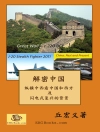This book links the trade of the Danish and Swedish East India companies to the British taste for tea, a Scandinavian craving for colourful Chinese silk textiles, import substitutions schemes and natural history in the eighteenth century. It is a global history exploring the exchange of silver for goods in Canton. It is also a European history studying the wholesale market for Asian goods in Gothenburg and Copenhagen, the formation of taste and the impact of fashion in the blending of tea and the assortments of colours on wrought silk destined for markets across Europe. Linking material history to political economy and the histories of science, this book ends on the threshold of the nineteenth century, the rise of the second British Empire in Asia, and the creation of synthetic dyes in Europe.
สารบัญ
Introduction: Global, European and Scandinavian histories and the East India trade. – 1. The Scandinavian trade with China. – 2. Dusty, ready-blended tea from the North. – 3. A colourful cargo for a motley people. – 4. Transferring and substituting tea and colours. – 5. Conclusion – New chronologies and geographies
เกี่ยวกับผู้แต่ง
Hanna Hodacs is currently based at the Center for the History of Science, Royal Swedish Academy of Sciences, in Stockholm, Sweden; her work is concerned with Swedish naturalists in late 18th century London. She has previously worked at Warwick University, UK, Birmingham University, UK, and Uppsala University, Sweden.












